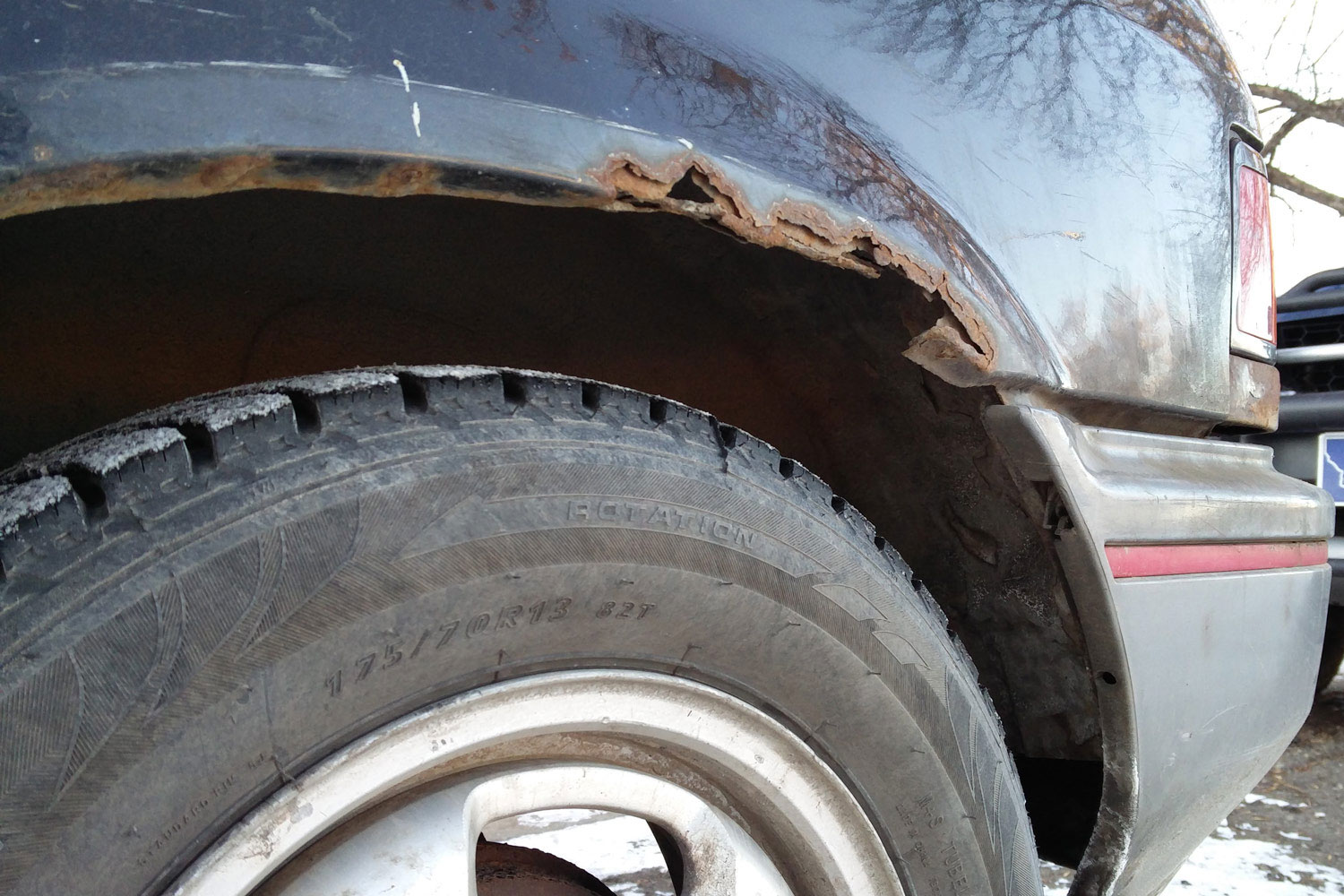Rusty Cars: How To Tell When a Car Has Too Much Rust
Rust isn’t necessarily a deal breaker. Here’s how to tell when it might be.
 Austin Lott | Capital One
Austin Lott | Capital One
If you’ve spent any time around classic cars, you’ve likely heard the saying “rust never sleeps,” meaning once it starts, it never lets up. That adage applies to newer vehicles too. Although modern cars benefit from highly effective rust-proofing techniques, they’re not immune to corrosion, especially if they’re driven in a climate that favors it.
Here’s how to determine if that used car you’re considering has too much rust.
How does rust develop?
Rust is the result of a chemical reaction in which the iron molecules in a car’s metal parts react with oxygen to create a new molecule called iron oxide. Manufacturers go to great lengths to rust-proof their vehicles, but metal parts inevitably get exposed to the elements through chips, scratches, and other damage.
Salt and chemicals poured onto roads to prevent ice can accelerate the spread of rust by acting as electrolytes that hasten the corrosion process. Salty seaside air can wreak havoc on a car as well.
How much rust is too much?
What constitutes “too much rust” depends in part on where you live and the type of car you’re driving. You might expect—and be willing to accept—some rust on a 2004 Toyota Matrix that was kept in Ohio, for instance, while any rust at all on a 2017 Mercedes-Benz GLE from Arizona would be a serious red flag.
In addition to factoring in the year, make, and model, figuring out if a car is too rusty requires identifying which parts are rusted, and the type and extent of the rust.
Broadly speaking, you shouldn’t worry about the surface rust that develops on underbody components, such as parts of the suspension and exhaust systems. This is a relatively minor problem that can be easily remedied with a wire brush or sandpaper; it doesn’t affect the car’s structure. The same applies to rust on hardware such as screws, bolts, and nuts. This kind of rust is common and usually isn’t a cause for concern.
Rust becomes a more serious problem when it affects the underbody or the frame. These are structural elements that keep you and your passengers safe in the event of an accident. Rust weakens metal, so a rocker panel with Swiss cheese-like holes obviously isn’t as strong as one that’s rust-free. Check the underbody carefully, preferably by putting the car on a lift.
When the car is back on the ground, take a look under the carpets if possible (including the piece in the trunk) to make sure rust isn’t spreading from the inside out. Be sure to inspect the area around the windshield. Debris can get trapped under the seal and cause rust.
It’s also a good idea to hunt down information about how rust affects the particular make and model of the specific car. Certain models are prone to rusting in specific locations as a result of design quirks, such as a water drain that gets clogged. You can find this information by talking to other owners, by chatting with someone who works at a body shop, or by searching online.
Is rust a concern in dry climates?
Basic chemistry dictates that cars tend to rust less in warm, dry states like Arizona and Nevada because they’re subjected to less humidity and fewer ice-melting chemicals than cars in cold, wet states.
It’s still a good idea to inspect the underbody before you buy. Even if a car is registered in Phoenix for example, nothing guarantees that it didn’t spend the first six winters of its life slogging through salty slush in a climate like Milwaukee.
Written by humans.
Edited by humans.
 Ronan Glon
Ronan GlonRonan Glon is an American journalist and automotive historian based in France. He enjoys working on old cars and spending time outdoors seeking out his next project car.
Related articles
View more related articles